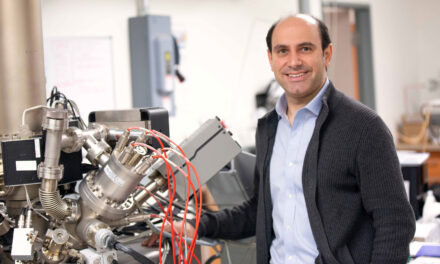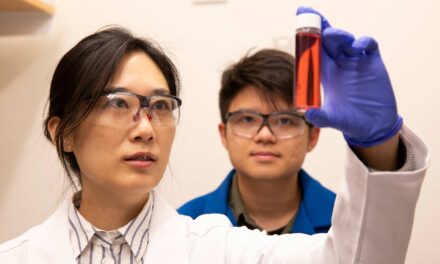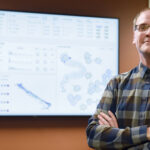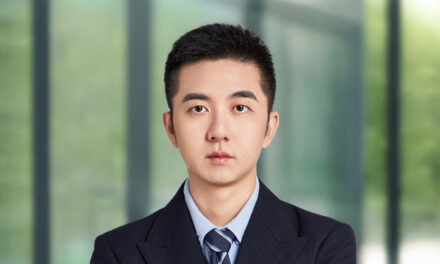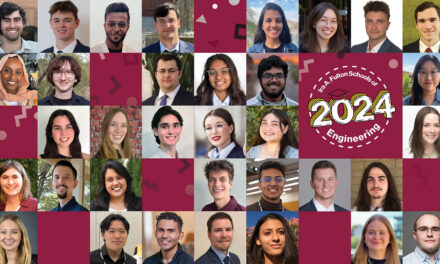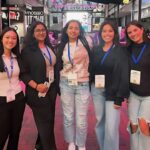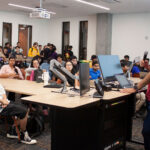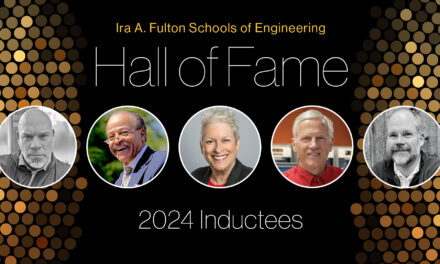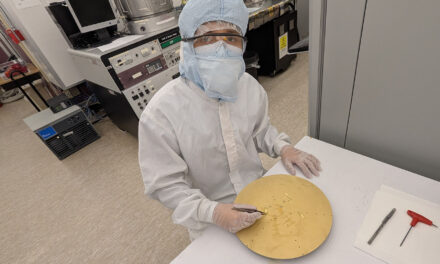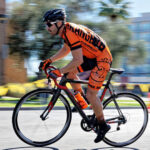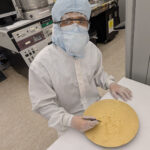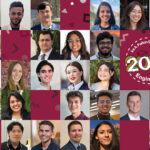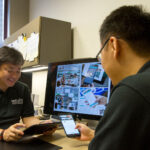
A human-centered design approach
ASU Professor Leila Ladani is introducing students to ethical engineering and manufacturing biomedical devices
Leila Ladani is on a mission to cultivate a human-centered mindset to guide the design and manufacturing of biomedical devices and implants. Ladani, a professor in the School for Engineering of Matter, Transport and Energy, part of the Ira A. Fulton Schools of Engineering at Arizona State University, is among pioneering biomedical engineers advancing the understandings of how devices can be used more effectively in clinical settings.
Ladani was recently awarded a $3 million grant from the National Science Foundation’s Research Traineeship program to develop a new biomedical device manufacturing training program at ASU. Her project, Design and Manufacturing of Medical Devices and Implants: Cultivating a Human-Centered Mindset, will connect engineering students with health care professionals and patients to introduce them to the ethical principles, laws and policies associated with the development and use of biomedical technologies.
“We want to put the users right at the forefront of innovation because the users are patients or clinicians,” Ladani says.“We want to make sure that what we are designing and manufacturing is something that they can actually use, with the mindset that human society is very complex.”
During the process of developing her own device, Ladani discovered a knowledge gap between biomedical engineers and the communities they serve.
In collaboration with Mayo Clinic and one of its well-known surgical oncologists, Dr. Barbara Pockaj, Ladani is developing a device to determine the presence of cancer in tissue margins during a lumpectomy – the surgical removal of a portion or “lump” of breast tissue, typically as a treatment for a malignant tumor or breast cancer.
ASU Women and Philanthropy is funding the development of the device, which will streamline the cancer removal process and reduce the need for re-excision.
With the intention of using the device in the operating room during surgery, Ladani realized the complexity of the clinical setting may not allow her current design to be used efficiently.
“We needed to make sure the device could detect the location of the cancer accurately and make it easy for the doctors to be able to read the results while they were operating. I figured out that there’s a big gap in theory and practice,” Ladani says. “We develop these innovations in the lab, but we don’t really know what makes a device effective unless we have a close connection with the medical side.”
Motivated to improve the experience of innovators who might encounter similar situations, Ladani began developing a program that would introduce STEM students to the nuances of device manufacturing. Program team members include faculty at ASU, including Katina Michael, Jafar Razmi, Kaushal Rege, Karen Anderson, Jean Andino and Rick Hall, and Dr. Steven J. Lester, a cardiologist, professor of medicine, founder and chief medical officer of the Mayo Clinic-Arizona State University MedTech Accelerator.
The team’s new biomedical device manufacturing program is built on a set of multidisciplinary and convergent research areas, which also builds on the strong relationship between ASU and Mayo Clinic and the Mayo Clinic and Arizona State University Alliance for Health Care.
“This endeavor represents an important facet in ASU’s quest for excellence in which achieving a convergence of disciplines is a key imperative,” ASU President Michael Crow has said in support of the program.
Dr. Rafael Fonseca, chief innovation officer at Mayo Clinic, also strongly supports Ladani’s project.
“Training engineers who understand the practical limitations of their discoveries and inventions is critical in advancing solution-oriented discoveries,” Fonseca says.
To effectively engage students in STEM with the medical aspects of their disciplines, they will connect with Mayo Clinic providers and key collaborators who are interested in the students’ prospective biomedical technologies or devices to shadow them for a semester.
“This process helps create a foundation for truly use-inspired technology development,” Lester says. “The program is a wonderful example of the collaboration between Mayo Clinic and ASU, which work together to create an intellectual ecosystem with expertise from every area of health care.”
Through the program’s curricular components, including applied and experiential learning and entrepreneurial activities, students will develop their ideas for biomedical devices. Then, under the guidance of experts, students go through the processes of disclosure and filing patents, involving all the steps necessary to commercialize their innovative products.
The goal is to help students develop a sustainable, scalable product, taking into consideration legal, regulatory, compliance and reimbursement issues. The entrepreneurial focus opens the possibility for some of the students’ ideas leading them to establish their own medical device companies.
The program also provides support for doctoral students through stipend and tuition coverage.
As a part of the project, Ladani is creating a new structured mentorship program for students at all levels. The Graduate-Undergraduate Mentorship, or GUM, Program will give graduate students opportunities to spend a summer mentoring undergraduate students interested in developing their own devices.
Ladani and her team are also developing new courses to acquaint students with the ethical and regulatory aspects associated with medical devices and implants. The program will also include components like seminars, orientations, retreats and presentations from guest speakers in industry and academia.
Though doctoral students will spend only two years in the program, the community they build during their time as participants is intended to last a lifetime.
“These students will have a breadth of understanding in several different areas that will impact their design work,” Ladani says. “With the information they gain, they will be more equipped to start their own companies to create devices as well as jobs.”
The program will enable students to design next-generation medical technologies that enhance care delivery and patient outcomes.
Doctoral students from all engineering disciplines are encouraged to apply via an online portal set to launch in spring of 2023. Interested students can contact Ladani at [email protected].
Ladani nominated for ELATES program
Professor Leila Ladani was nominated by ASU provost Nancy Gonzales to participate in the ELATES leadership development program at Drexel University. The program is designed to support senior female faculty members and allies of all genders in STEM-related fields to hone their leadership effectiveness. Ladani was one of only 30 people to be selected for this year’s nationwide cohort. Over the course of the yearlong fellowship program, she will attend multiple in-person and online meetings with peers as each attendee develops an institutional action plan to advance a mission of their choosing. We look forward to sharing the impact Ladani’s institutional action plan will have as she progresses in the ELATES program.


